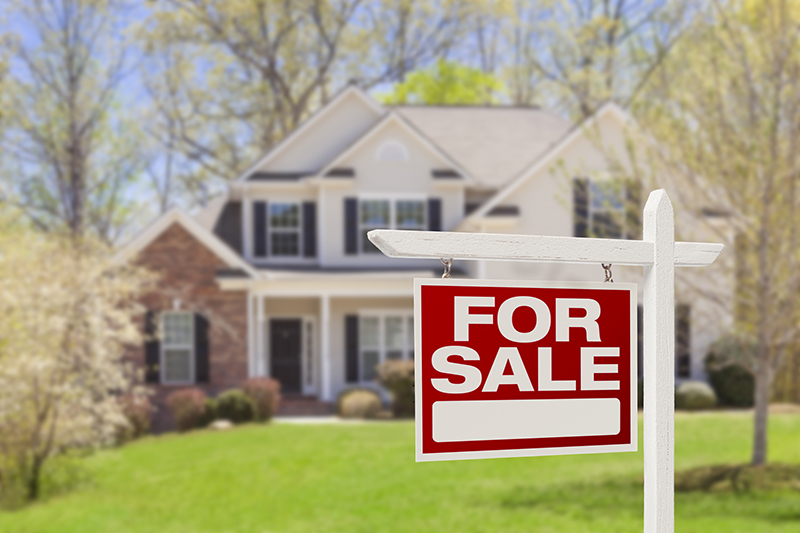
Selling a home is not just a transaction—it can be an emotional journey and could be one of your biggest financial endeavors. If you’re ready to sell your home in Waukesha County, knowing what goes on before, during, and after selling a house in Wisconsin will make the process smoother, less fraught, and more likely to result in the results you want. From tried-and-tested tips on staging your home to getting maximum exposure for your listing, navigate the home selling process with our guide.
Table of Contents
The Waukesha County real estate market
Before we deep dive into preparing your home for sale, let’s take a quick look at the real estate market of Waukesha County which is considered a seller’s market. There is generally more interest in Waukesha County than there are properties for sale with a lack of inventory, especially for buyers looking for homes valued up to $500K.
Another point of interest is that time spent on the market before being sold is down from the early part of 2023 when homes spent an average of 53 days on the market. As of June 2023, that time had tumbled to 33 days. This is not surprising as spring and summer are peak buying times and the market has become much more active with demand greatly outpacing supply.
Preparing your home for sale

The first part of selling a house in Wisconsin is making sure that your home is market-ready. Preparing your home for sale maximizes your chances of selling quickly and for a price, you’ll be happy with. It will create a great first impression and allow buyers to envision themselves living in the home. Even the most minor improvements can make a big difference when selling a home.
Cleaning and decluttering
Creating an inviting and welcoming space should be one of your first goals when you first start on the journey of selling a house in Wisconsin. And that begins with cleaning and decluttering your home.
With the number of rooms in a home, not being certain what to keep and dispose of, and how long it should take, it can quickly become overwhelming when you start. These tips will help you declutter methodically and clearly:
- Have a plan
The best way to tackle a decluttering project is to stay organized. As you make your plan, decide on the rooms that need to be prioritized (usually the most used or the most cluttered ones) and establish a specific goal for each decluttering session (e.g. decluttering for 30 minutes each day). Making an overall timeline keeps you on track.
- Have a sorting system
A sorting system is a great way to ease the decision-making process when decluttering. Typically, there are four categories when decluttering: Keep, donate/sell, store, and throw. The items to be kept are the ones that will still be used around the house while the items for storage are the seasonal or sentimental belongings. For the items that you no longer want or need, they can be donated or sold as long as they are still usable. It’s best to be fairly brutal about what’s really needed and what isn’t. Apart from tools, if you haven’t used something in 6 months, do you really need it?
- Get the easy items out of the way
Once you begin decluttering, get rid of the easy items first. These are usually expired products, empty containers, and unused or dried-up office supplies. Once you get rid of these, you’re on your way. Seeing immediate results helps build momentum and you’ll be in a groove in no time.
- Work through each space in small parts
Trying to declutter an entire room or area all at once can lead to uncertainty and a loss of momentum. It’s best to break the task down into smaller and more manageable parts. For example, focus on decluttering a cabinet or one corner of the room first.
- Depersonalize the space
Buyers need to be able to picture themselves in the home. That’s where depersonalizing comes in. Removing personal items like family photos, personal collections, and decor that are too colorful or too personalized helps make your home as neutral as possible.
After decluttering comes the deep clean. Removing dirt, dust, and odors, freshens your home and helps highlight its best features. These are some of the tasks that your deep cleaning checklist should include:
- Wiping down all surfaces
- Cleaning the windows, mirrors, and other glass surfaces
- Washing the curtains
- Polishing fixtures like doorknobs, faucets, and light switches
- Getting the carpets, rugs, and upholstery professionally cleaned
Deep cleaning is a very strenuous task and for this, you might want to hire professional help. Deep cleaning professionals will not only have the tools and equipment to make the job easier, but they’ll also have the know-how to tackle deep cleaning a whole house.
Making the necessary repairs
The right repairs can have a significant impact on your home’s value. In fact, certain home repairs can make or break a sale. You don’t have to fix every minor issue or address every cosmetic imperfection when selling your home. It’s perfectly acceptable to sell a home with normal wear and tear. What matters more are the improvements or upgrades that add value to your home. If an issue discourages buyers, causes your home to sell for less, or makes it stay on the market longer, then it’s an issue that must be addressed right away.
An example of the necessary repairs are ones involving your plumbing, electrical, sewage, and HVAC systems. A major leak, for instance, will cause water damage and affect the structural integrity of your home, and make a buyer seriously consider if they want to undertake the required repairs.
Staging your home
The last step to preparing your home for sale is to stage it. Staging a home is the process of creating an appealing environment for potential buyers by rearranging furniture, adding key accessories, and improving its overall look and feel. Aside from highlighting the best features of your home, staging can also up its value.
One of the easiest and most cost-effective ways to stage your home is to add a new coat of paint. It transforms your home into one that looks clean and feels fresh and inviting. When it comes to choosing a paint color, neutral tones like white, beige, and gray shades are excellent choices. Sticking to a neutral color scheme appeals to a broader range of buyers and allows them to focus on the home’s features.
Curb appeal plays a huge role in home staging as well. What they see as they approach your property affects the buyer’s first impression of your home and sets their expectations early on. Boosting your home’s curb appeal doesn’t require a lot of time and money. Simple projects like repainting the front door, adding colorful plants, and replacing your mailbox can do wonders in transforming your home and making it more inviting.
Marketing Your Home

When it comes to selling a house in Wisconsin, it’s not enough to list it in the MLS (Multiple Listing Service) and let that do all the work. The key to marketing your home is to maximize exposure. Exposing it to as many buyers as possible is essential in helping you get top dollar for the property. Here are some tips to maximize marketing. The good news is your Coldwell Banker agent will help you with your marketing strategy:
- Price your home correctly
Of course, you want the highest possible price for your Wisconsin home. However, a home that’s priced too far above its market rate will end up scaring buyers away. This means that the property stays longer on the market than a comparable home, which in turn scares even more buyers away. Thus, a cycle is created that is very hard to break out of, normally requiring you to lower the initial asking price in order to generate interest. But by then there’s still the question marks of why the property has been on the market for so long.
Pricing a home correctly is both an art and a science. Aside from the comparable market analysis, you also have to take the home’s unique features, architectural style, and overall look into consideration. The comparable market analysis looks at nearby homes that are similar in terms of location, size, age, condition, and features. From all these factors, you can find the right balance between maximizing your home’s value and attracting the right buyers.
- Create a compelling listing description
Since the majority of home buyers begin their search online, it’s important to make your real estate listing stand out in the digital realm. A good real estate listing puts your home in the best light while still providing an accurate description. Once you start crafting your listing description, make it attention-grabbing from the get-go. Having a narrative is a good way to engage buyers and give them an idea of what it’s like to live on your property.
- Take high-quality photos
Your listing description isn’t the only thing that reels buyers in. When buyers look at a listing, the other elements they’ll be interested in are the photos and videos. Having poorly taken badly lit photos and videos will actually do your home a disservice, so if you’re going to have photos and videos, (and you should) make them of high quality.
A real estate photographer is your best bet when it comes to high-quality photos. Their technical expertise will feature your home at its best.
- Use social media to your advantage
Social media is a powerful tool that allows you to reach a larger pool of buyers. While a direct sale through social media is rare, it is effective in driving traffic to your real estate listing. Just like your listing description, make sure that your social media captions are authentic, which will make them much more likely to be engaging. Whether it’s on Facebook or Instagram, it’s also important to choose the social media platforms that are popular among your target audience. It’s a good idea to have multiple posts on different platforms, though you may want to adapt each one to fit in with the particular demographic of users.
- Work with a real estate agent
At the end of the day, the best way to market your Wisconsin property is to work with a real estate agent. With their experience, expertise, and in-depth knowledge of the local real estate market, they know exactly how to price your home and how to market it effectively. Your Coldwell Banker Elite agent will provide full service for the marketing of your home.
Showcasing Your Home To Potential Buyers

Open houses and private showings are a great way for potential buyers to get a better feel of your home. They can assess the property and see if it’s a space that they can imagine themselves living in. An open house is exactly what it sounds like: An invitation for multiple buyers to drop by and explore the property. A private showing, on the other hand, is a scheduled appointment with a qualified buyer.
The best time to hold an open house is on a Saturday, Sunday, or on a holiday. Since potential buyers are typically free during the weekend, this attracts more buyers and maximizes your property’s exposure. However, in recent years, twilight open houses on Thursday and Friday evenings have been gaining popularity. As for weekend open houses, mid-morning, early afternoon, and early evening are ideal.
Whether you hold an open house or a private showing, potential buyers should have a memorable experience as soon as they step through the front door. Here’s what you can do to prepare your home for visitors:
- Clear clutter
- Switch on the lights
- Adjust the temperature
- Add plants inside and outside the home
- Make your home smells great
- Play soft music
- Make snacks available
These are just small and simple actions that lift the overall feel of visiting your home.
Negotiating Offers and Closing the Sale

Once you have an offer (or multiple ones) for your Wisconsin property, it’s time to navigate the negotiation process. When selling a house in Wisconsin, choosing the highest offer isn’t everything. Price is definitely an important factor. However, you also have to consider the terms and contingencies and the buyer’s qualifications. This is another area of the selling process where having an experienced real estate professional to guide you is important.
These are the five questions that can help in evaluating a home offer:
- How qualified is the buyer?
There are two main ways a buyer can purchase your home: Through a mortgage or by paying in cash. With a mortgage, the loan is provided by a lender to finance the home purchase. With cash, there is no need for a mortgage or any type of financing since the buyer pays for the home outright.
If the buyer is going with the mortgage route, you’ll need to check if they have been pre-approved or pre-qualified. Although both are beneficial for buyers, a pre-approval letter carries more weight as it involves a more thorough assessment by the lender.
- Is the buyer financially ready?
A homebuyer who is financially ready has the resources to pursue their homeownership goals. Apart from pre-approval (if they are buying the home through a mortgage), a potential indication of their financial security is the amount given for the down payment and earnest money deposit.
- Are there any contingencies?
Buyers may add contingencies or requirements to their purchase offer. These contingencies are there to protect the buyer and provide an exit strategy if certain conditions are not met. The most common real estate contingencies include items found in an appraisal, home inspection, title, and mortgage. As a seller, reviewing these contingencies helps ensure that the transaction is mutually beneficial.
- How much is the buyer offering?
The price offered by a potential buyer should also align with its current market value. Comparing their offer with recently sold properties that are similar in age, condition, and features will help you determine if the amount offered by the buyer is fair.
- What is the closing date?
Another factor to consider when evaluating a home offer is to look at the closing date proposed by the buyer. If the date matches up with your timeline, then the deal can progress, if not, then there will need to be some further negotiation so that the interests of the seller and buyer can align. There is no guarantee that this will happen, so in cases where an agreement is proving too difficult to reach, it’s probably best to walk away and entertain other offers.
Your real estate agent is there to help with the negotiation process. Using their skills and expertise, they can strategically handle the different offers and counteroffers, along with navigating complex negotiations.
Sell your home with Coldwell Banker Elite
Get the most out of your home sale by working with Coldwell Banker Elite, one of the top local brokerages in the Lake Country area of Southeast Wisconsin. With their years of experience in the industry combined with their personalized real estate services, Coldwell Banker Elite aims to create an exceptional real estate journey for each client.
Reach out to the Coldwell Banker Elite team at 855.569.0588 or send us a message here.

